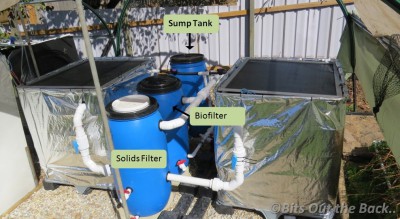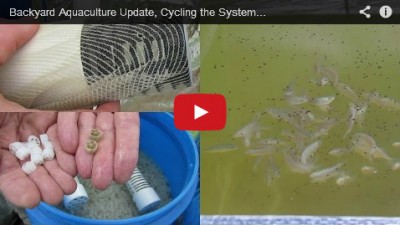Fish Farm..
I have spoken to a few folks online that loved our aquaponic set up & the idea of raising their own fish & veggies but just didn't have the available space for the grow beds &/or have a climate suitable to raise fish outside.. Many did however have access to garages or basements where they had just enough room to set up a fish tank & some filters..
This led me to a bit of a search on YouTube where I came across one chap in particular that had built a rather impressive indoor fish farm.. Not long after that I went to a how to build a simple fish farm workshop at a local community garden that was hosted by a leader in Aussie aquaculture design, Paul Van der Werf.. After seeing how easily the system went together I decided to have a crack at it myself..
The system basically consist of 2 fish tanks, a Radial Flow solid waste filter, a biofilter & a sump tank..
The system itself may look a tad complicated with all the pipe work, but is actually very basic in its components.. Shall give you a quick explanation of how they all work together.. The fish excrete 2 forms of waste, a solid which passes though the digestive tract & ammonia which is excreted through their gills..
The water flows out of the fish tank via gravity into the Radial Flow solids filter at the front of the system.. The solids "fall/precipitate" out of the water as the flow is disrupted & slowed down on its way through the filter.. The clean water then flows through to the biofilter where the ammonia is processed.. In this filter there are 85 litres of biomedia which becomes home to naturally occurring bacteria that process the waste ammonia..
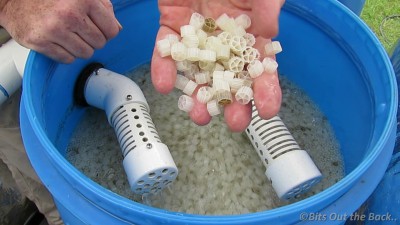
From there the water flows into the sump tank to be pumped back up to the fish tank to make its journey around the system again..
There are a few things that need to be monitored while starting out, like the ammonia, nitrite & pH levels in the water, but once the system ages a bit & the bacteria colonies establish themselves and process all the waste ammonia, only fish feeding & minor maintenance is required..
In this system we decided to raise 50+ Jade perch (25 or so in each tank) as they are a fast growing species & also have the highest omega3 levels according to CSIRO research..
We hope to have them to plate size (600g) within 12-15 months & after that the fish farm will be turned into a second aquaponic system for the patch..
For those interested, about a week ago I did a bit of an update on how the farm was going.. The update shows a bit more in depth look at how the fish & system are progressing..
Pests in the patch..
One of the common pests folks have in the patch at this time of year is the white cabbage butterfly (Pieris rapae)..
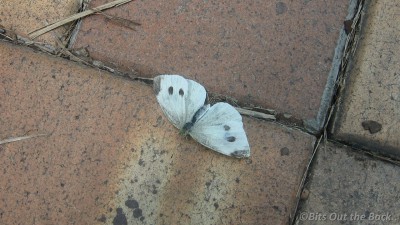
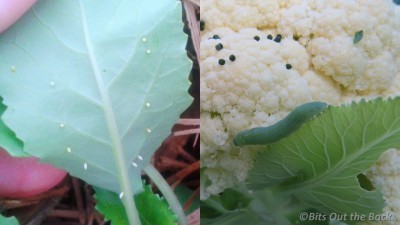
The 2 best ways I have found to control these pests is by excluding them from the veggie patch using insect netting & by using the bacterial insecticide BT (Bacillus thuringiensis) on the plants outside the hoop house..
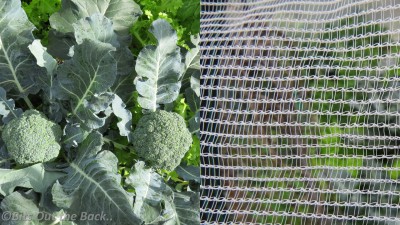
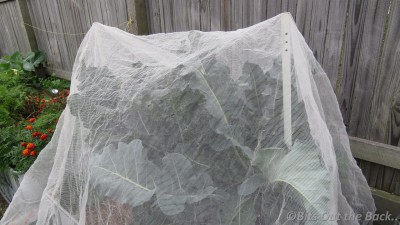
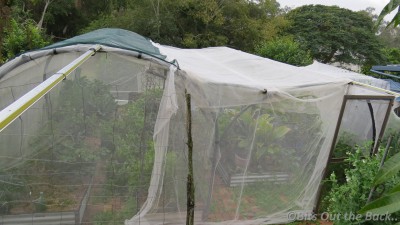
A down side of having a veggie net hoop house is that it also excludes beneficial insects like bees, lady bugs & praying mantis.. I find that I need to manually pollinate the tomatoes in the hoop house at the moment (tapping the flowers every day is my method) & have also noticed that aphids tend to flourish in the hoop house with no predators to keep them in check.. Nothing a quick liquid soap spray can't fix though ;)
The BT insecticide is my weapon of choice for protecting the brassicas outside the hoop house.. This powder is available from most garden/hardware stores & is very easy to make up following the directions on the packet.. It is also safe for use around mammals, birds, fish & is used by certified organic farmers all over the world..
The one down side of BT is that it will also kill caterpillars that are not pest species, so I tend to only spray the plants I want to protect & not the whole garden.. Another is that it needs to be reapplied every few weeks & can wash off in the rain, but as Winter is traditionally our dry season that isn't too much of a problem up here..
Hope that give folks a few ideas on how they can control these nasty little beasties..
Bring on the BRASSICAS!!
I love this time of year & find it the most productive, harvest wise for us.. We have been eating home grown broccoli, cauliflower & beets every night along with the ever productive greens :)
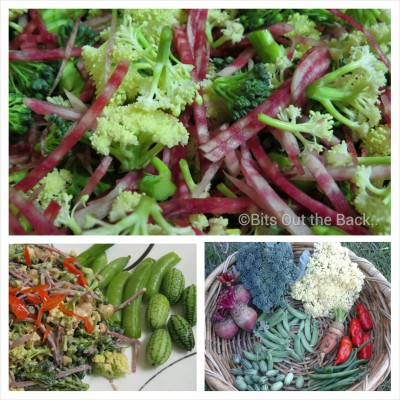
I have had a few requests for cheesy cauliflower (baked cauliflower with cheese added on top in the last few min).. Think that will be on the cards for the next harvest just to keep the girls happy ;-)
The warrigal green have really kicked off & the amaranth has surprised us with how fast the regrowth reappears..
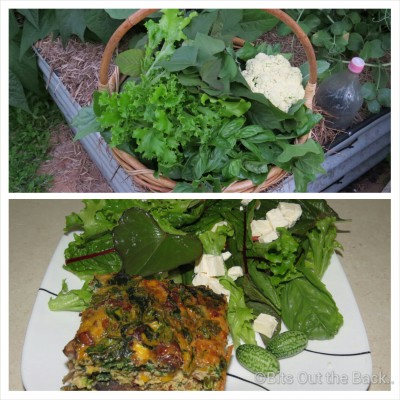
Well, it's time to do some landscaping for the new aquaponic system between the light showers of rain..
Hope you've enjoyed the quick description of the fish farm & feel free to ask any questions you may have..
Cheers folks & have a great one,
Rob..
